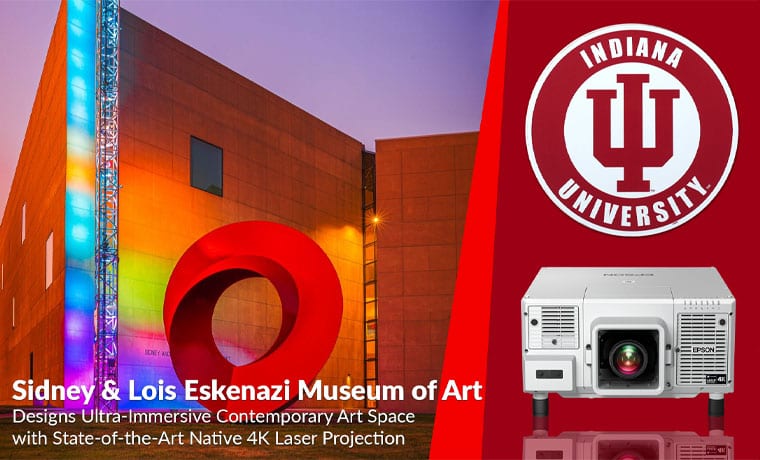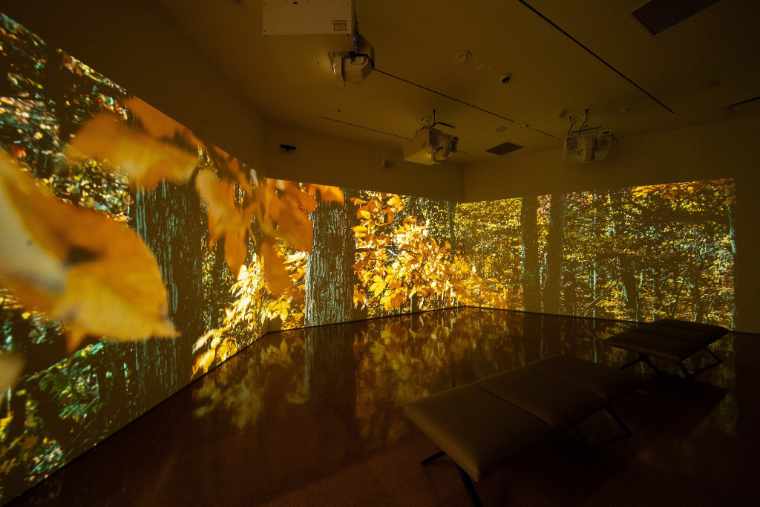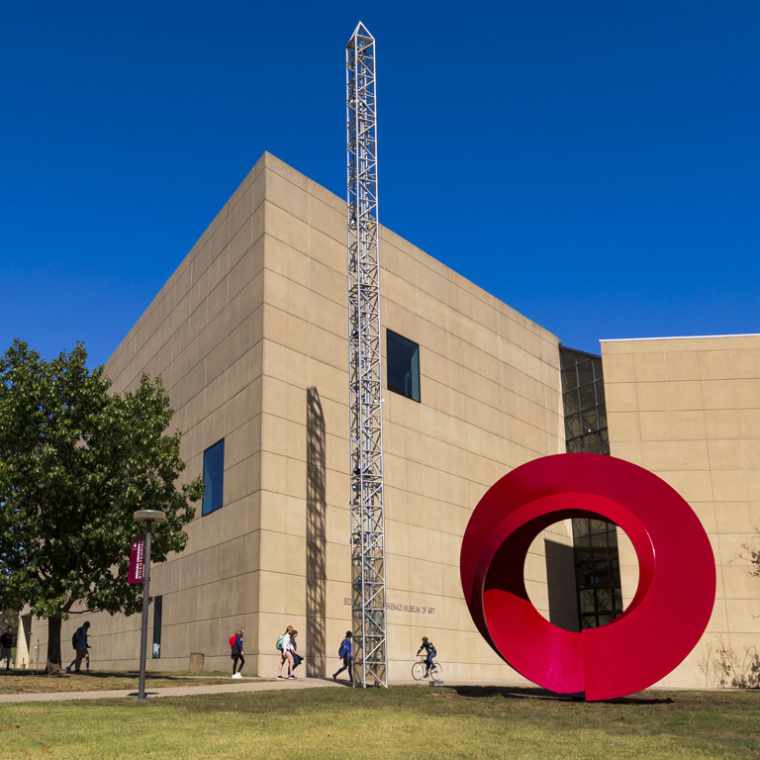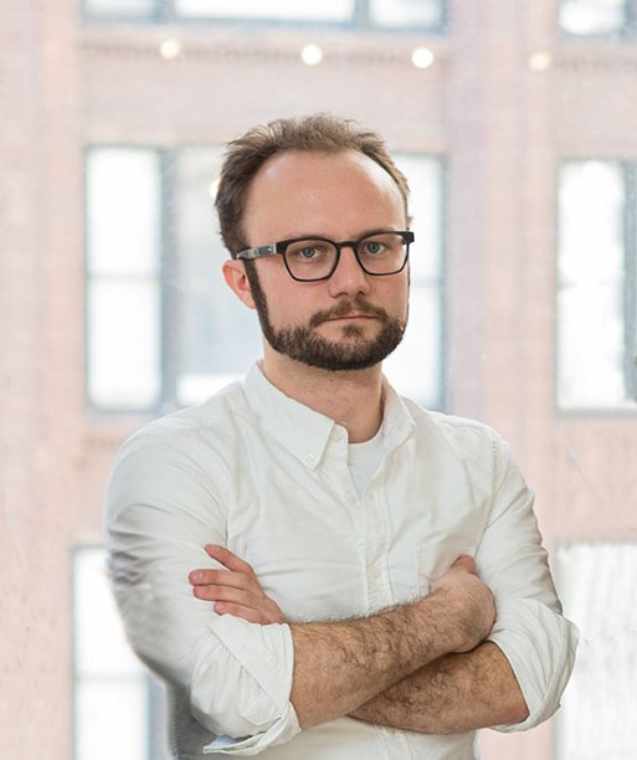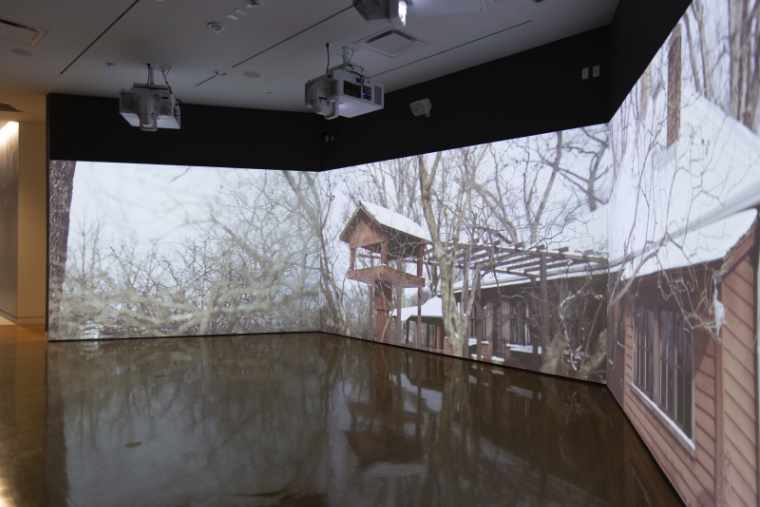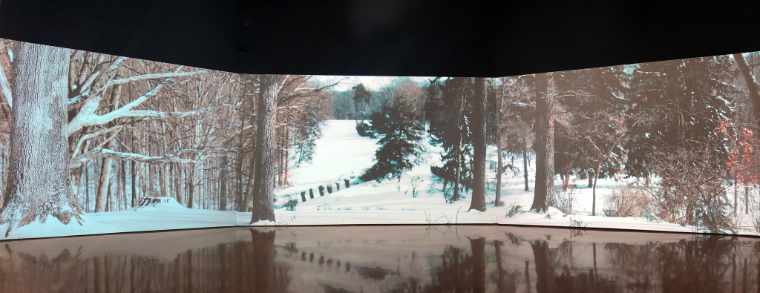“Early on, when we were investigating this project with the museum, we were looking at a lot of options,” said Foster. “At first, we said ‘no projection.’ There were these big windows across the hall, a giant glass roof on the atrium as well, it just didn’t lend itself to being able to project and give the vivid projection we wanted to accomplish. We did shootouts with several projectors, but we just didn’t have the 4K projector we were really looking for to accomplish what we were trying to do.”
However, Foster and his team had planned on using this space as a projection area for years and as such, took measures to make the space more suitable to house the right projector when it became available.
Given the university’s relationship with Epson as a provider of other on-campus projection needs, Foster and his team reached out to Epson to find the right product for the space. They had to consider the fact that the room was very well lit, didn’t have a door to block outside light, and did not have a drop ceiling, meaning a typical projector installation wouldn’t cut it.
“We had to be really careful about ripping out holes in the ceiling as we don’t have a typical drop ceiling. We actually had to do paper diagrams on the floor to measure everything out perfectly. Even fine tuning something down to the inch,” said Foster. “In a traditional projector situation, we have some flexibility in terms of throw, length, etc., but with short throw projectors, we didn’t have that flexibility.”
Ultimately Foster and his team decided to go with three just-released projectors and lenses from Epson to meet their needs: the Epson Pro L12002QNL, Epson’s first native 4K 3LCD Laser Projector and Epson ELPLX02W (V12H004Y02) ultra-short-throw lens designed for Epson projectors. Indiana University is the first institution in North America to install these brand-new native 4K 3LCD projectors and lenses.
“The native 4K 3LCD projectors are much brighter than what we were used to, so that large window was able to stay fully open if we needed. Given the right circumstances, we could keep that window open and viewers would be able to see the work through the window. At night you can actually see the work from outside the building. Because of the vivid colors and high brightness of the projectors, and the uniqueness of the space for its shape, size and exterior vantage point, we’re showing the artwork to the museum, but also to the outside campus. It’s a little counterintuitive, you’d think a large window into a projection space would not be ideal, but the space and advanced projector technology lends itself to a pretty unique experience,” said Foster.
An added plus? The native 4K 3LCD projectors are laser-based, so university technicians on Foster’s team will not have to go up to the projectors and change the lamps.
With three new state-of-the-art projectors built into the space, the Eskenazi Museum of Art now has a fantastic new medium for artists on campus and beyond to explore and capitalize on. Despite the initial challenges of the space design, the new projectors were able to deliver a unique solution to overcome the many limitations and create a nearly boundary-less area for artists to fill. With three different channels of video available, artists have the flexibility to use as many channels as they want depending on how many movies or videos they can do. The options they have are unlimited in that regard given they have such a huge “canvas” to work with.
Also, given the projectors are high frame rate capable, they offer incredibly smooth motion – a feature that Reichert and Foster believe artists will take advantage of, along with the brilliant color capabilities. All this video excellence requires formidable processing power to bring it to light, however.
“We have some major horsepower running to execute these videos in a multi-channel format. For example, the video files Elliot and Arthur put together is almost 12K worth of video horizontally. So we have an extremely powerful computer that can output all that simultaneously, it’s really impressive,” said Foster.

